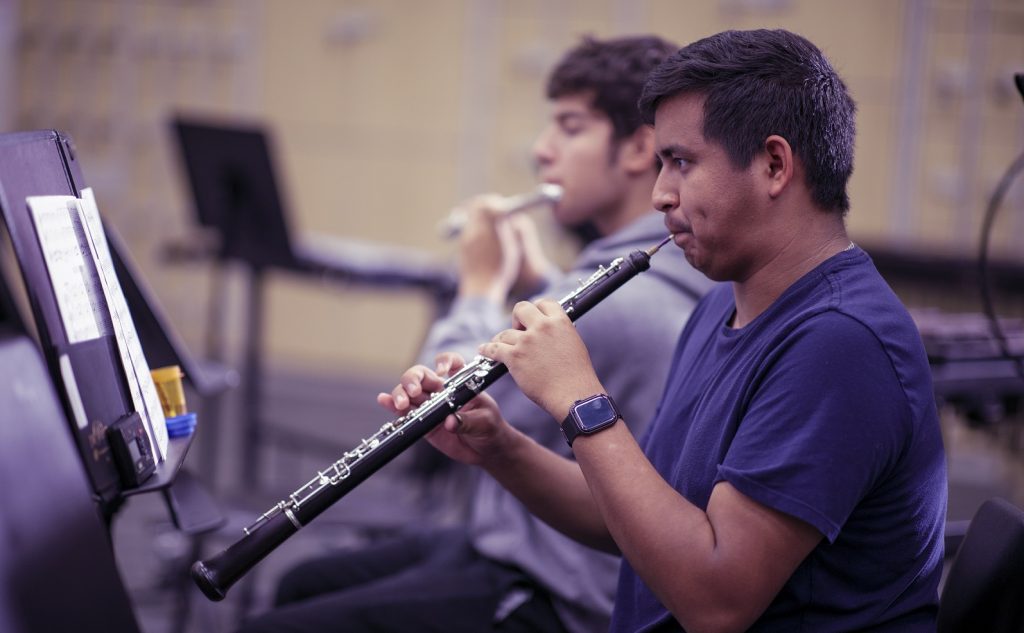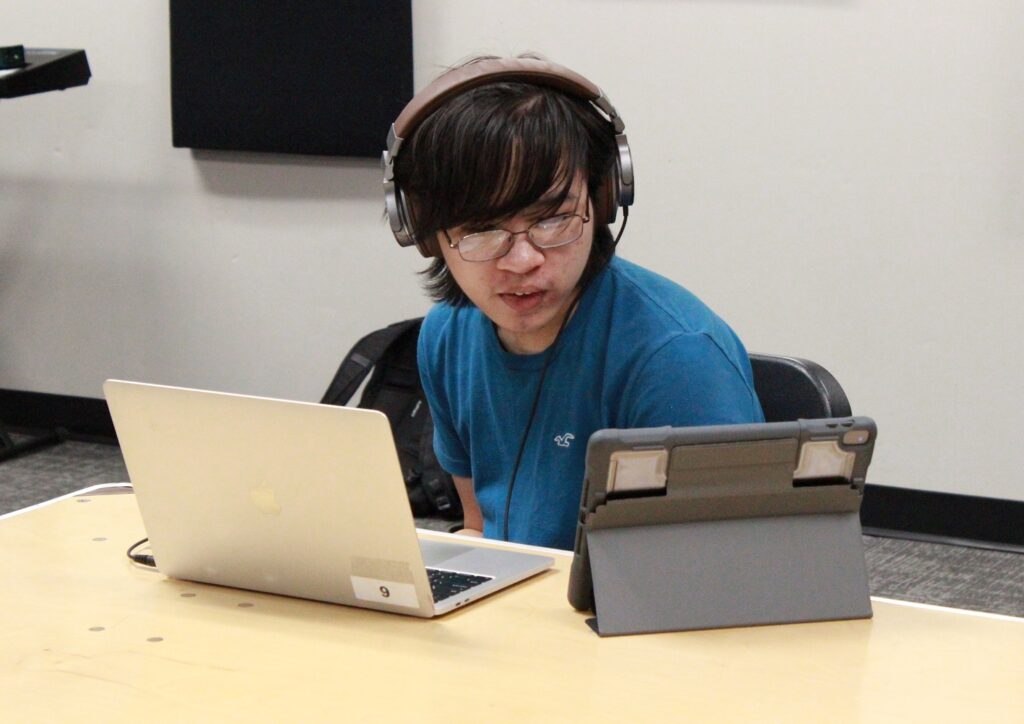Tagged Under:
Teaching Music in High-Need Schools: Best Practices for Student Success
In Part 4 of this series, we discuss proven methods and strategies for developing exceptional student musicians in high-need schools.
Now that we have laid the foundation for how school music programs can positively influence high-need schools and the students they serve, it is time to explore methods that have been proven to work in these settings. When many teachers reference high-need or Title I schools, they often include factors such as low socioeconomic status, higher crime rates, greater student absenteeism, and an increased risk of involvement in gang activity and drug use among other negative consequences. Some may even assume that an overwhelming majority of their students are from single parent households and are being raised by teen mothers, or “kids raising kids” as the cliché goes.
While some of these conditions may be the reality for some students who attend these schools, we should not generalize these factors to all students. Eric Jimenez and Justin McLean pointed out may untruths about teaching in high-need schools in their article, “Dispelling the Myths of Teaching in a Title I School.” They stated that many of the things that teachers may believe about teaching in this setting are based on deficit thinking and lowered expectations for musical excellence. If you have not listened to Jimenez and McLean’s music education podcast, The Score, consider adding it to your playlist. It has become required listening for my music education majors here at Tennessee State University!
As an undergraduate and graduate student, I was lucky to have mentors who taught me that all students can learn and reach the highest levels of academic and musical excellence, regardless of their life circumstances. One of those mentors, Dr. Shelby Chipman, Director of Bands at Florida A&M University, emphasized the importance of believing that our students can achieve anything in “Perceptions of At-Risk Students by Florida Secondary School Band Directors,” an article based on his doctoral dissertation. By creating a safe and nurturing environment, developing an effective daily routine and empowering each student within the program, we can give our students the knowledge and skills they will need to be successful not just in music, but in every facet of their lives.

Create a Supportive Environment
Throughout my years of teaching in high-need schools, the one factor I found to be most critical was the classroom environment. Not only did I want students to enter a clean and organized classroom every day, I also wanted them to know that our room had a unique “micro-climate” and that it was up to all of us to maintain it. I wanted students to feel safe, know that they could be open and take risks, and that I was there to support them. Dr. Gabriel Arnold’s article, “Effective Band Director Techniques for Teaching in Title I Schools,” emphasizes the importance of creating such an environment.
I would start each year doing several group activities with the students that included establishing rules for the music room and setting goals for both individual student achievement and for the group as a whole. I scheduled a town hall at the beginning of the year and invited students, parents, staff and administrators. There, we opened up the floor to allow all stakeholders to state any ideas that they had and what they would like to see the program accomplish that year.
When it came to the music we studied and performed, I made sure to get input and take suggestions from students so that our repertoire was made up of an inclusive and diverse selection of pieces that represented my students. Representation, identity and cultural competency can go a long way toward developing more engaging experiences for students and can be another way we let our students know that they are seen and valued.

Develop a Consistent Routine
I find that predictability can be an asset to music organizations, especially when a student’s home life or school day outside of our class may not be as routine. When I taught high school and middle school band, I dedicated the first several weeks of school just establishing and practicing procedures. Whether it was how to enter class, take out equipment, assemble instruments, knowing when to talk and when to be silent, warming up or tuning, my students could depend on the class flowing in a certain way. Though there were times when we had to deviate from our structure for other reasons — usually outside of our control — students built up enough “muscle memory” through practicing the procedures that they could easily adjust. This helped them feel very confident and comfortable in my class. It also led to students trusting that I cared for them, that I knew what I was doing as a teacher, and that I wanted them to have the best music-making experience possible.
In her article entitled “The Role of Band Programs in Title I Schools: A Middle School Principal’s Perspective,” Dr. Lisa Williams discussed how music programs in high-need schools can positively impact student outcomes and increase the morale of the entire school. I would constantly challenge my students to take the things they were learning in my class and apply them to all their classes. I wanted our organization to serve as an example of what was possible, and by doing so, I hoped to inspire other teachers and students in our school to replicate our success. I would often invite other teachers to bring their students to my classroom for an in-school field trip and let them participate in our class and ask as many questions as possible. When students saw how my colleagues and I worked together for the good of all, it was easier to reinforce high expectations throughout the school. The band students also saw how influential they had become in the school, and I tried to empower them as much as possible through leadership opportunities.

Make Every Student a Leader
Early in my career, I realized that the band staff and the parents could only do such much. There was only so much time and bandwidth we all had for certain tasks. One summer, while planning for pre-season camp, I started to think about how we could get our students more involved with the operations and logistics of running the program. We decided to have a free leadership workshop (open to anyone currently in band) to see how many students might be interested in doing more. On the first day of the program, nearly the whole band showed up; way more than we expected! After we finished covering leadership basics, such as communication, teamwork and conflict resolution, I asked for suggestions on how we could allow our student leaders to be more involved.
From this conversation, our show planning, dance routine and arranging teams were formed. These groups helped students with an interest in wanting to learn more about these areas an opportunity to contribute to our halftime shows and concerts in significant ways. Other students wanted to be involved in different ways, so we created student committees that mirrored our parent booster committees with groups that handled volunteering, equipment management, fundraising, administrative support and more. These committees with both students and parents helped us operate both during the school day and after school, and they provided more leadership opportunities for students.
At the first high school where I worked, Miller Grove High School in Lithonia, Georgia, we had a simple motto: “You Must Do Something.” This referred to both our ethos and school requirement that every student had to be involved in at least one extracurricular activity. For the band, we took this statement to another level by requiring that every band student must be a leader and serve on at least one of our student teams or committees. I know that by distributing leadership this widely it can feel as if we are over-delegating. But, at the end of the day, our staff was clear to let everyone know that the director had the final word. We did this to ensure that everyone took ownership of the program while knowing that our band staff would ensure that everything ran smoothly and met our collective expectations for success.

Stay the Course
As we all strive to build programs that will support and nurture student musicians, we must remember that everything we are trying to achieve is an iterative process. By creating a supportive environment, developing a consistent routine in our classrooms and empowering each student through leadership development, we will see our students achieve as musicians and grow as people. If we continue to show up for our students and give it our all each and every day, they will see our example and show up for us as well.
Read part 1 of this series on recruitment.
Read part 2 of this series on rapport.
Read part 3 of this series on defining success.
Read part 5 of this series on funding.
Read part 6 of this series on retention.
Read part 7 of this series on sustainability.
References
- Chipman, Shelby R. (2017). “Perceptions of At-Risk Students by Florida Secondary School Band Directors.”
- Jimenez, Eric, McLean, Justin (2020). “Dispelling the Myths of Teaching in a Title I School.”
- Arnold, Gabriel. (2020). “Effective Band Director Techniques for Teaching in Title I Schools.” Band Directors Talk Shop.
- Williams, Lisa O. (2017). “The Role of Band Programs in Title I Schools: A Middle School Principal’s Perspective.”
top photo by Adobe Stock/Stanciuc















